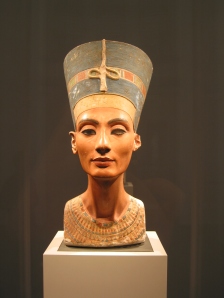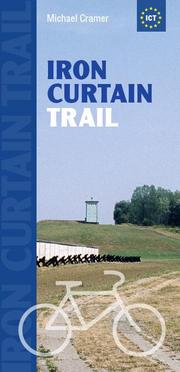It’s ironic that while the new National Geographic reality TV show “Nazi War Diggers” has evoked howls of outrage from archaeologists all over the world for its happy-go-lucky desecration of human remains for tabloid documentary entertainment, the new Smithsonian show “Treblinka: Hitler’s Killing Machine,” has received interest, fairly positive reviews, and widespread (if ghoulish) curiosity.
Actually there is a lot more that links these two shows than distinguishes them. They are both clear signs of how reality TV is transforming World War II and the Nazis into seductively entertaining documentary fare, rather than history that we really have to take seriously. Not only that. Archaeology no longer plays the role of the handmaiden of history; it has become reality TV’s whore. Young people digging for the unexpected treasures can be quite photogenic and it’s fairly easy to turn into a narrative with breathless, cliffhanging teasers to keep us tuned in across the commercials. Like so many “Secrets of the Bible” documentaries, archaeology has allowed itself to become a new medium of video trivialization. Or in these cases, a medium for the banalization –or even outright denial– of the horrors of the Holocaust and the battles on the Eastern front.
What are the main objections to Nazi War Diggers? Well, mostly disrespectful handling of human remains and poor archaeological technique. The first objection is due to the positive influence of the passionate and effective ethical movement of indigenous peoples all over the world to stop the archaeological collection (or sometimes even discarding) of human skeletal remains as just things. There are many complex issues to be settled of course, especially in regard to ancient, unclaimed, or non-indigenous (if such a term can be used) human remains unearthed in excavations, but Nazi diggers, with its gleeful display of femurs and skulls as alongside the holsters, guns, and other military paraphernalia is just grotesque treasure hunting. Its airing on the National Geographic Channel is a disgraceful blot on the NG brand, which anyway has sold away its reputation along with the management of the channel to the Rupert Murdoch empire. What else do you expect when you sell your brand to the impresario of industrial-grade history porn?
The second objection to Nazi Diggers comes from the defenders of cultural property and the fighters against looting, another impact of the turn in archaeology and heritage practice to recognizing that artifacts and sites are not merely sandboxes for private treasure hunters or open pit mines for the private antiquities collectors’ market. A valid point certainly, and cause for the condemnation of other cable reality shows like American Diggers on Spike TV, which valorize looting and make it into a sort of a video contest in which the digger who can rip the most valuable thing out of the earth is the winner. But then, for that, the American Institute of Archaeology’s favorite mythic archaeologist, Indiana Jones, is the champion of the world.
So what is my beef with the “”Treblinka: Hitler’s Killing Machine,”? It can’t be faulted in relatively greater respect shown to of human remains, or the sophistication of its archaeological technique. The excavation is headed by Dr.Caroline Sturdy Colls, a forensic archaeologist who teaches at Stafforshire University and whose 2012 dissertation, “Holocaust Archaeology: Archaeological Approaches to Landscapes of Nazi Genocide and Persecution” eminently qualifies to lead such a dig.
But what is the show trying to show through archaeology? An admiring promo in livescience.com credits the dig with being “The first-ever archaeological excavations at the Nazi death camp Treblinka [which has] revealed new mass graves, as well as the first physical evidence that this camp held gas chambers, where thousands of Jews died.” Is this news to anyone? Should not the remains of the victims be left in peace? The camp, its purpose, its layout, and its mass extermination machinery has been extensively documented, not least by the history-conscious Nazis themselves. The archaeological finding that the Nazi’s did not quite obliterate all evidence of their crimes would hardly raise an eyebrow for most normal people.
But for the viewers, this scientific exercise provides a ghastly, voyeuristic entertainment. Worse yet it actually provides holocaust deniers a kind of intellectual legitimacy. Like the pseudo-scientific assertions of the Scientific Creationists who surf decontextualized scientific data and debates between scholars that evolution (and likewise in a different context, Global Warming) is just a theory, the comments have begun to roll in about the Treblinka dig:
Here are a few samples, questioning the archaeological interpretation of the site:
–Did a word search for “cubic” and “square”. No hits. Where are the numbers? How much area did they excavate, how many bodies did they find and / or estimate based on the grave volume? How big were the mass graves? Compare that to other mass graves which are less politicized and we know the death count, and compare the sizes of the two to get an estimate. If you want to say, “well, we can’t find them all because most of them were incinerated. We got some Nazi to say that after pulling his teeth and crushing his balls a few times at Nuremburg.” – that’s conspiracy theorist logic based on confession extracted from torture.
–Oy vey, look at this picture of us digging in the ground. Obviously this proves that the Nazis holocausted over 60 trillion people. Don’t ask for any specifics, like about how much of the area was actually excavated, or how many bodies were actually exactly found.”
–So they found a brick wall and some tiles. Let’s rush out an article saying its gas chambers. Cheap journalism.
When will an archaeologist do work on the millions of German civilians that were fire bombed to death by the Allies, or the 25 million Christian Ukrainians killed by the Bolsheviks in the 30’s? Or the Japanese that we held in concentration camps and nuked. They get no memorials, no museums, no reparations, no constant media articles, no Hollywood movies. It would be nice to have more balance in the world.
Yes, archaeology can raise as many questions as it asks. But they are often the wrong ones when archaeologists allow themselves to be packaged for fast-food, channel-surfing cable TV.




















